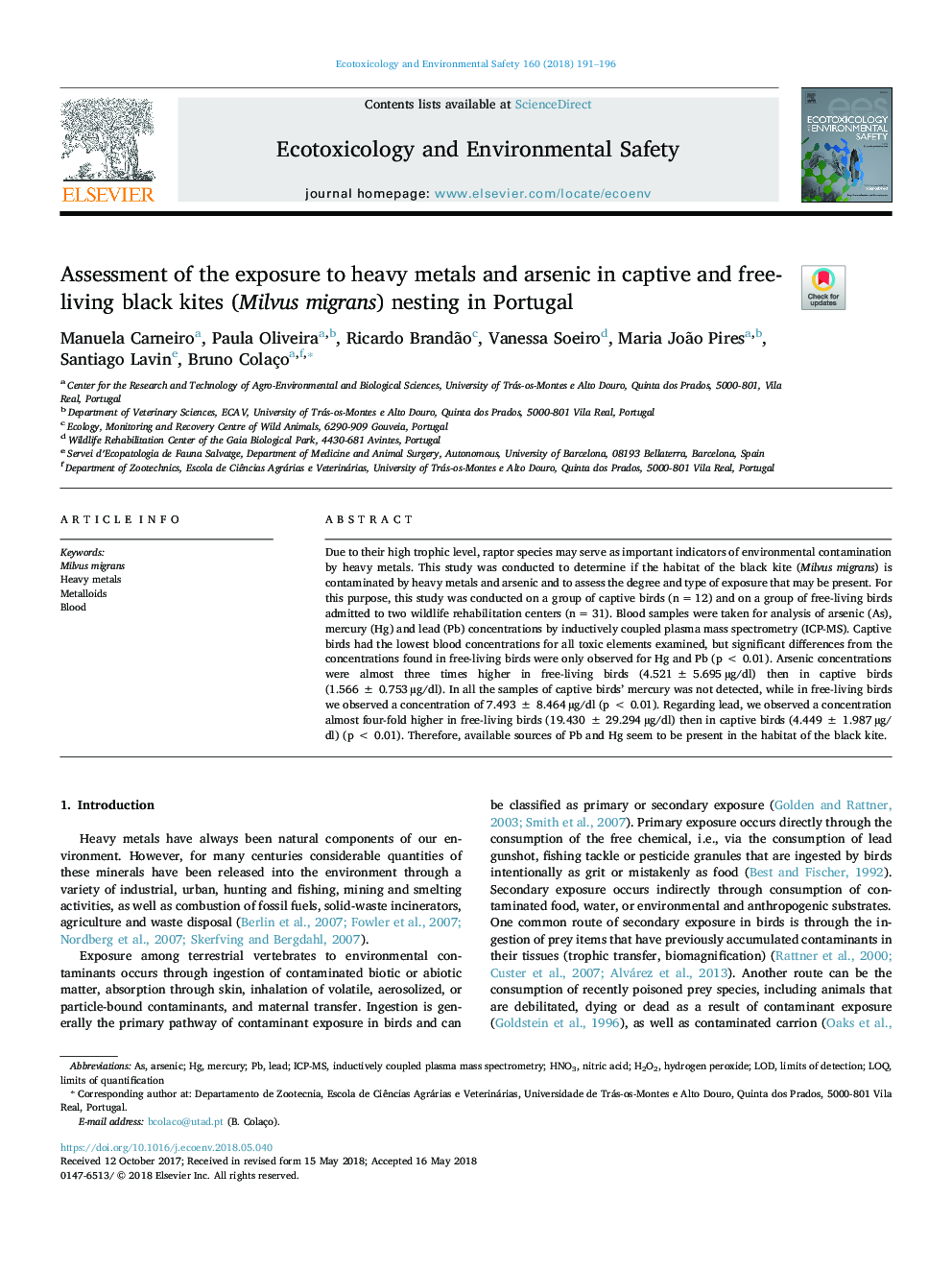| Article ID | Journal | Published Year | Pages | File Type |
|---|---|---|---|---|
| 8853445 | Ecotoxicology and Environmental Safety | 2018 | 6 Pages |
Abstract
Due to their high trophic level, raptor species may serve as important indicators of environmental contamination by heavy metals. This study was conducted to determine if the habitat of the black kite (Milvus migrans) is contaminated by heavy metals and arsenic and to assess the degree and type of exposure that may be present. For this purpose, this study was conducted on a group of captive birds (nâ¯=â¯12) and on a group of free-living birds admitted to two wildlife rehabilitation centers (nâ¯=â¯31). Blood samples were taken for analysis of arsenic (As), mercury (Hg) and lead (Pb) concentrations by inductively coupled plasma mass spectrometry (ICP-MS). Captive birds had the lowest blood concentrations for all toxic elements examined, but significant differences from the concentrations found in free-living birds were only observed for Hg and Pb (pâ¯<â¯0.01). Arsenic concentrations were almost three times higher in free-living birds (4.521â¯Â±â¯5.695â¯Âµg/dl) then in captive birds (1.566â¯Â±â¯0.753â¯Âµg/dl). In all the samples of captive birds' mercury was not detected, while in free-living birds we observed a concentration of 7.493â¯Â±â¯8.464â¯Âµg/dl (pâ¯<â¯0.01). Regarding lead, we observed a concentration almost four-fold higher in free-living birds (19.430â¯Â±â¯29.294â¯Âµg/dl) then in captive birds (4.449â¯Â±â¯1.987â¯Âµg/dl) (pâ¯<â¯0.01). Therefore, available sources of Pb and Hg seem to be present in the habitat of the black kite.
Keywords
Related Topics
Life Sciences
Environmental Science
Environmental Chemistry
Authors
Manuela Carneiro, Paula Oliveira, Ricardo Brandão, Vanessa Soeiro, Maria João Pires, Santiago Lavin, Bruno Colaço,
